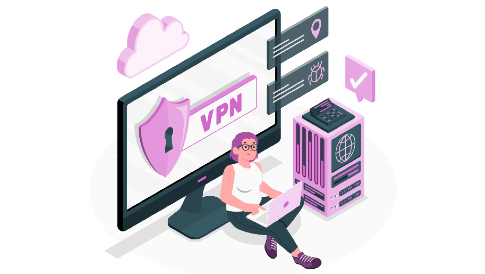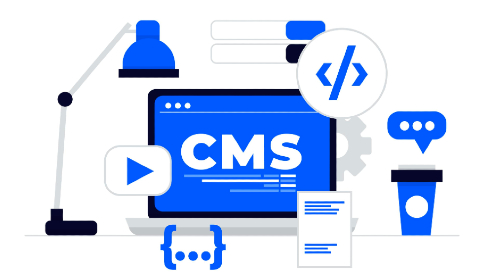Top 7 Software Development Methodologies With Pros and Cons [2022]
Software development methodologies help development teams stay on track and manage their projects. The models provide structured guidance to cut risks and reduce waste throughout the development lifecycle. Additionally, methodologies allow teams to stay organized and meet delivery timelines. Development agencies can choose from several software development methodologies introduced over time. In reality, most dev shops use a mix of strategies to meet unique business needs. Here are the top 7 software development methodologies for you to consider. We will also discuss the pros and cons of each so that you can make an informed decision. So, let’s start with one of the most traditional models in the development lifecycle of software.
1. Waterfall Development Methodology
The waterfall model was the first established methodology for developing systems. It was introduced in 1970 and soon became popular with development agencies for its simplicity. The waterfall method takes a linear approach to software development. It lays down the whole development process in sequential stages mentioned below:
- Requirements gathering
- Design
- Implementation
- Verification
- Maintenance
Waterfall development leaves no room for going back once a stage is complete. Therefore, you need to establish the project requirements accurately. Additionally, each phase of the development sticks to a predetermined list of tasks. Developers can move to the next stage only when the exit criteria are met. Moreover, the method also relies on heavy documentation. Today, the waterfall method is slowly becoming obsolete as its structure is pretty rigid. However, it is still popular with development agencies that are new to the market. The method may also be helpful to develop simple software without complexity.
Pros
- Easy to implement and manage as phases are sequential
- Each team member is aware of the deliverables
- Ideal for small projects
Cons
- Involves a lot of rework and risks
- Can become expensive
- Delayed ROI
Software Development Methodologies – 2. DevOps Development
DevOps is a flexible model that relies on iterative development. The methodology became popular during the 1990s and aimed to improve productivity throughout the development lifecycle. Interestingly, DevOps doesn’t have any single definition or written down methodologies. Rather, it is a culture where your development and operations teams work together. The process is highly collaborative and requires the involvement of different departments.
The basic principle of DevOps is to enable developers to write code that aligns with customer requirements. Additionally, it reduces waste and errors as the operations team puts in its insights. Therefore, your product is more likely to work as expected on deployment. Even though DevOps is flexible, development teams use a few standard practices to achieve deliverables. The list includes:
- Continuous deployment
- Permanent delivery
- Steady integration
- Microservices and containerization
DevOps blends well with other development approaches to serve varying business needs. It also plays along with agile development that we will discuss next.
Pros
- Seamless collaboration between IT groups
- Quick improvements guided by customer feedback
- High use of automation
Cons
- Needs a cultural shift
- Adoption can take time
- Integration complexities
3. Agile Development Methodology
Agile is the new way to develop faster and reduce development bottlenecks. The methodology first appeared in the Manifesto for Agile Software Development in 2001. It contained 12 development principles created by leading developers for use by development agencies. The agile method sorts workflows into short sprints that can range between 1 and 4 weeks. It is also an iterative model that relies on feedback from your customers to make changes. If implemented successfully, agile development can bring quick results.
Additionally, businesses can react to market changes in less time by staying agile. As a result, the development approach can even help you gain a competitive edge. No wonder agile methodology is now highly popular worldwide. However, the agile method needs optimum communication to bring returns. You have to ensure all your teams, customers, and developers are in the loop at all times via the best agile project management tools.
Pros
- Allows you to develop bug-free and reliable software
- Quick delivery times
- High customer satisfaction
Cons
- The number of changes can overwhelm teams
- Feedback needs to be filtered
- Some find it difficult to understand the model
4. Software Development Methodologies – Scrum
The agile methodology gave birth to many consequent software development methodologies. Among them, scrum is one of the most popular in the development industry. It also follows an incremental approach and divides work in limited sprints of up to 4 weeks. The scrum method has a few requirements and roles you need to fulfill:
- A product owner who keeps track of client requirements and deliverables
- A scrum master to manage workflow and the development team
- A development team that performs development tasks
The scrum approach is a lean methodology and reduces waste by focusing on customer requirements. Teams also learn on the job and implement the takeaways of one sprint in the next one. The process keeps on repeating to deliver reliable software within deadlines. Best of all, scrum methodology speeds up the development lifecycle of software. The short sprints allow developers to identify challenges and create solutions quickly. So, it is the ideal approach if you want to hire a Ruby developer to leverage iterative development.
Pros
- Cost-effective and flexible
- Improved collaboration due to frequent meetings
- Allows businesses to become customer-centric
Cons
- Inadequate documentation hampers knowledge transfer
- Needs commitment of every member on the team
- Lack of control on deadline
5. Kanban Methodology
The Kanban methodology has been used by several industries to achieve deliverables visually and track progress. It started doing rounds in the manufacturing sector and was used extensively by Toyota at one time. Today, the kanban method provides a simple structure for software development. Many of you might also be familiar with the kanban board for project management. You are using a kanban board when you rely on tools like Trello for your development team. The kanban approach sorts work in three primary sections:
- Planned
- In-progress
- Developed
Some agencies choose to include two more columns after “Developed,” which are “Tested” and “Completed.” Team members update the kanban board as they complete determined workflows to keep everyone in the loop. As a result, the board can act as a real-time repository of what is achieved and what remains to be completed. Additionally, it can help businesses take advantage of agile development.
Pros
- Highly visual and simple
- Allows teams to focus on what’s important
- Quicker delivery
Cons
- Kanban board needs constant update
- Items on the board can become overwhelming
- No timeframes
Software Development Methodologies – 6. Lean Methodology
The lean development method forces you to focus on what’s essential. The model dictates development teams develop the crucial features and leave out everything else. However, that doesn’t mean you develop an inferior product. Instead, lean development is excellent to build your MVP or minimum viable product. It is a prototype of your final build and contains only the most important features. You can use the MVP to gather user feedback and test your apps with enough room for improvements.
The lean methodology has several principles like enhancing learning and eliminating waste. Decisions are also taken as late as possible to stay agile and react to customer demands. Additionally, a lean development process can speed up development and help businesses market faster. Moreover, the approach empowers the development team and increases the experience of the members. Lean and agile are the top methodologies today, inspiring more development approaches.
Pros
- Requires minimum resources
- Ideal for limited budgets
- Improves productivity
Cons
- Requires a business analyst
- Too flexible for some teams
- Every development team member should be skilled
7. Feature-Driven Development
Feature-driven development also falls under agile and lean development methodologies. It is both an iterative and incremental approach and incorporates several development best practices. Developers work on a determined list of features to improve quality and efficiency. The feature-driven method has six essential steps:
- Build a high-level model
- Create a list of features
- Develop a plan using features as a foundation
- Design based on features
- Build the features
Best of all, this methodology is great for object-oriented programming. You can use it for your development purposes if you design your product around objects or data. Additionally, feature-driven development is suitable for short-term projects or to add new functionality.
Pros
- Fewer meetings due to adequate documentation
- Can be scaled easily to meet increased demand
- Reduces complexity by focusing on individual features
Cons
- Needs careful monitoring of each phase
- Not suitable for small teams or individual developers
- Puts too much pressure on the main developer or programmer
Final Thoughts on Software Development Methodologies in 2022
Software development methodologies provide a structure to streamline your development process. They may also come with principles to guide your development lifecycle. As a result, you should choose the methodology that helps you achieve your business objectives. Currently, methodologies based on agile and lean approaches are more popular. These methods cut down waste and improve the productivity of team members. You can also expect faster deliveries and reliable products with fewer bugs.
On the other hand, simple projects may still find traditional methods like waterfall development useful. As a result, establish your requirements and then choose an appropriate development methodology. You can also combine different methods if your needs are unique.




Leave a Reply